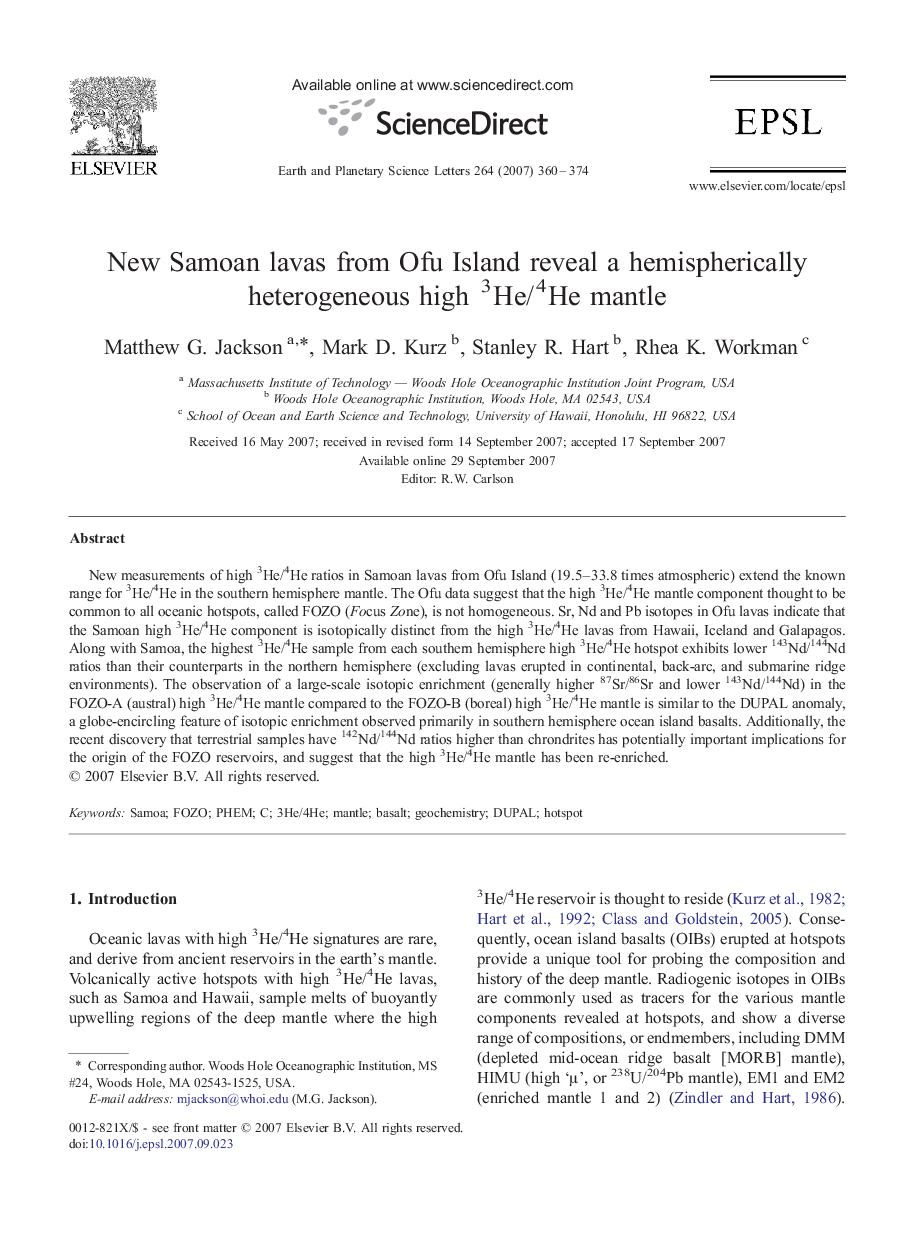| Article ID | Journal | Published Year | Pages | File Type |
|---|---|---|---|---|
| 4679732 | Earth and Planetary Science Letters | 2007 | 15 Pages |
New measurements of high 3He/4He ratios in Samoan lavas from Ofu Island (19.5–33.8 times atmospheric) extend the known range for 3He/4He in the southern hemisphere mantle. The Ofu data suggest that the high 3He/4He mantle component thought to be common to all oceanic hotspots, called FOZO (Focus Zone), is not homogeneous. Sr, Nd and Pb isotopes in Ofu lavas indicate that the Samoan high 3He/4He component is isotopically distinct from the high 3He/4He lavas from Hawaii, Iceland and Galapagos. Along with Samoa, the highest 3He/4He sample from each southern hemisphere high 3He/4He hotspot exhibits lower 143Nd/144Nd ratios than their counterparts in the northern hemisphere (excluding lavas erupted in continental, back-arc, and submarine ridge environments). The observation of a large-scale isotopic enrichment (generally higher 87Sr/86Sr and lower 143Nd/144Nd) in the FOZO-A (austral) high 3He/4He mantle compared to the FOZO-B (boreal) high 3He/4He mantle is similar to the DUPAL anomaly, a globe-encircling feature of isotopic enrichment observed primarily in southern hemisphere ocean island basalts. Additionally, the recent discovery that terrestrial samples have 142Nd/144Nd ratios higher than chrondrites has potentially important implications for the origin of the FOZO reservoirs, and suggest that the high 3He/4He mantle has been re-enriched.
